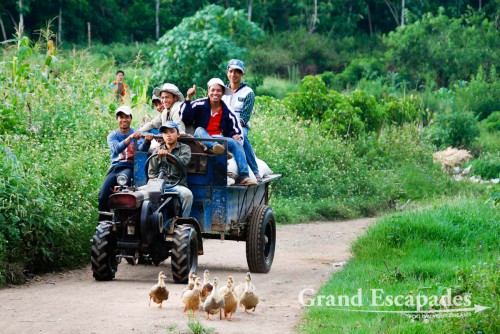The ecotourism project that started in 1999 in the Luang Nam Tha province has been quite a success story and has been extended to some of the other 20 National Park Areas (N.P.A.). The main goal is to reduce poverty in rural areas, protect the environment and support local culture. The 2007 edition of the Lonely Planet quotes that 75% of Laos is covered with unmanaged vegetation with 25% of this being primary rain forest. This fact, plus the many minorities and diverse wild life makes it the ideal place to explore a healthy untouched environment.
Unfortunately, it is very obvious that this is changing at a rapid pace. In many places, large parts of the forest are burned down to plant rubber trees, a project initiated by the Chinese government four years ago. In many villages, you can see the “nurseries”, where the small seedlings are grown before they are re-planted on the cleared hills. It takes 8 years before the first sap can be harvested.
We also witnessed the construction of roads into these, nowadays remote, villages. Of course there is lot of concern about the loss of this rain forest. Nevertheless, the villages and the Lao government see a source of income in these impoverished rural areas. With the demand for tires rising, it is a business idea difficult to turn down. The official version is that rice will also be planted together with the rubber trees…
Since ecotourism is such a friendly term but has been misused frequently, we were very cautious, also because we had heard some distressing reports from fellow travelers. We booked a two day trek with a company called Green Discovery that to us looked the most professionally run. Their folders explain in great detail who benefits from the money spent by western tourists and to what extent!


No comments yet.